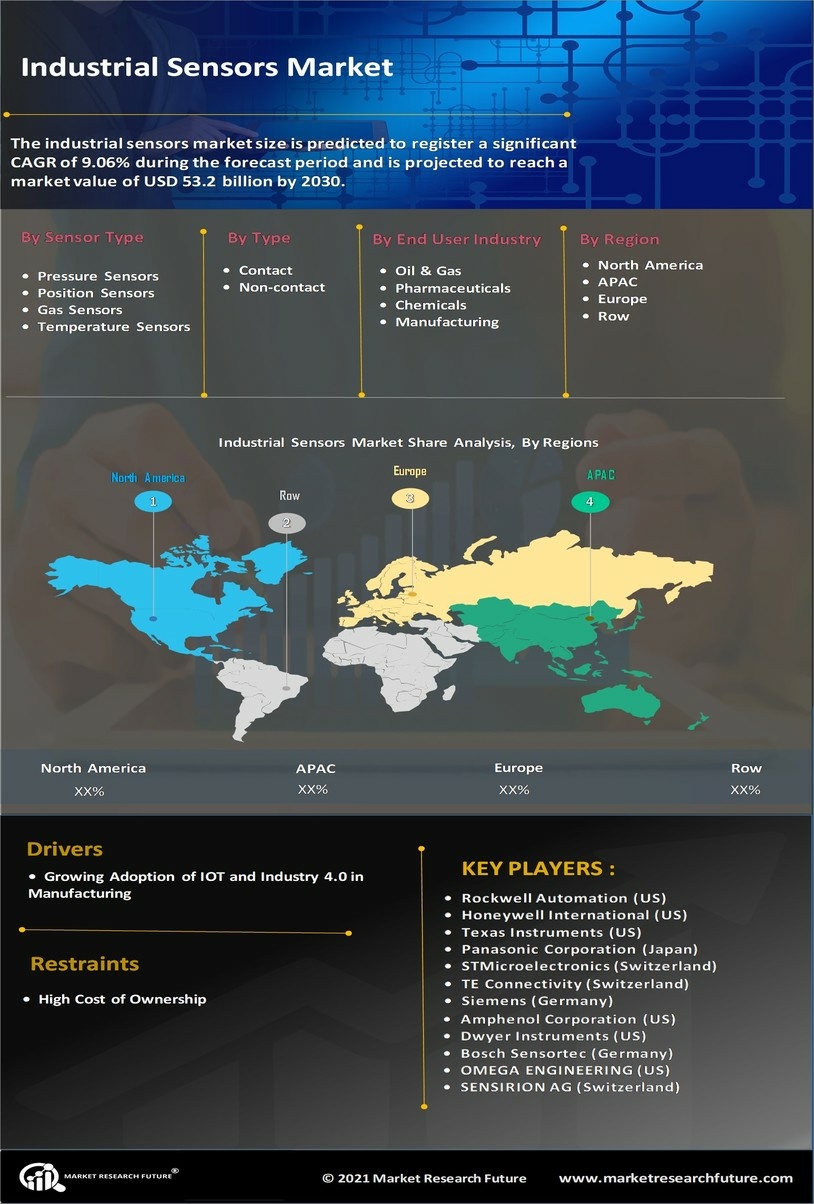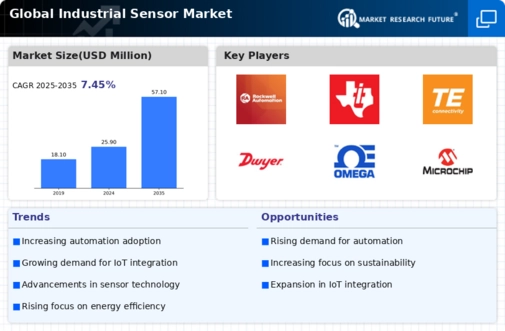Industrial Sensors Market Summary
As per Market Research Future Analysis, the Global Industrial Sensor Market was valued at USD 25915.13 million in 2024 and is projected to grow to USD 57136.55 million by 2035, with a CAGR of 7.45% from 2025 to 2035. The market growth is driven by the rising adoption of temperature sensors, the integration of IoT and Industry 4.0 in manufacturing, and the increasing demand for smart sensor-based wearable devices. Key segments include pressure sensors, which are expected to hold the largest market share, and image sensors, anticipated to exhibit the highest CAGR during the forecast period. North America leads the market due to automation and Industry 4.0 adoption, while Asia-Pacific shows rapid growth in industrialization and sensor demand.
Key Market Trends & Highlights
Key trends driving the Industrial Sensor Market include technological advancements and increased application across various industries.
- Temperature sensors are widely used across industries like medical, food, and petrochemical, making them a key growth driver.
- The pressure sensor segment is expected to dominate the market share, followed by temperature sensors.
- The non-contact sensor segment is projected to exhibit the highest CAGR during the forecast period.
- MEMS technology is anticipated to hold the largest market share among sensor technologies.
Market Size & Forecast
| 2024 Market Size | USD 25915.13 million |
| 2035 Market Size | USD 57136.55 million |
| CAGR (2024-2035) | 7.45% |
Major Players
Key companies include Rockwell Automation, Honeywell International, Texas Instruments, Panasonic Corporation, and ABB Group.
















Leave a Comment